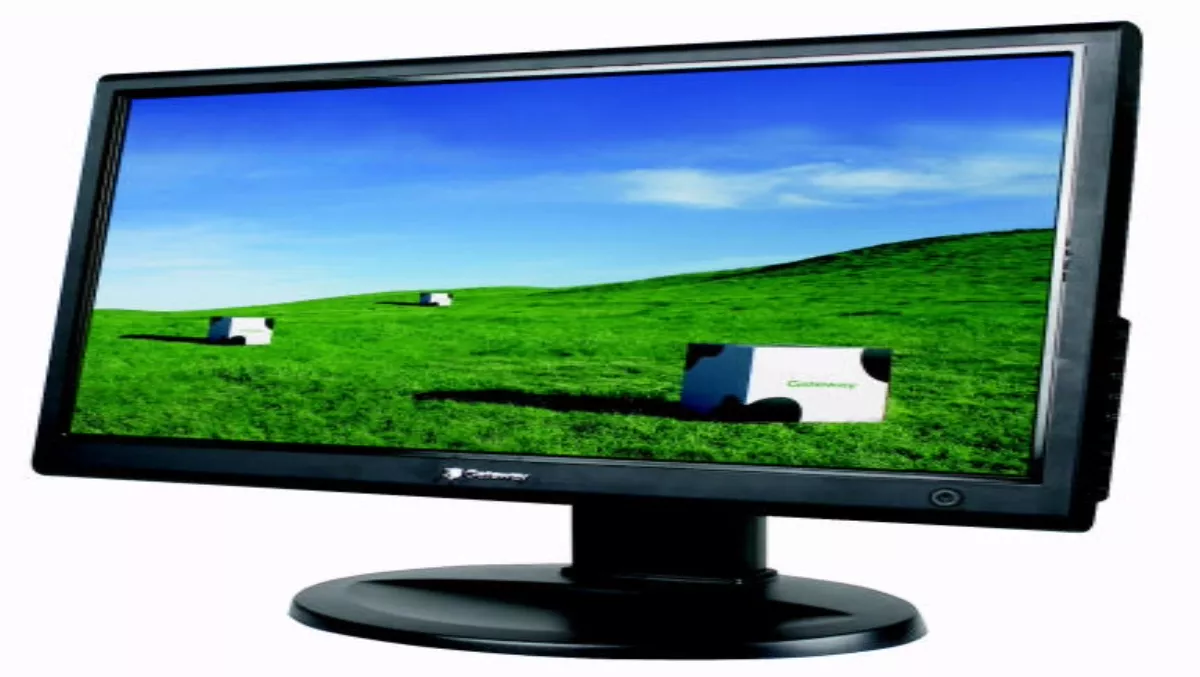
How to buy a monitor
One of the most important factors when buying a PC is choosing the perfect monitor to go along with it. After all, this is the screen you will most likely be staring at for hours on end, day after day, week after week and maybe even year after year! You may not realise it, but choosing the correct monitor can actually make a world of difference, so we're here to help!
CHOOSING THE TECHNOLOGY
The most popular display technology today is LCD. In the past, we saw many people (particularly those involved in graphic design) using CRT monitors because they support a greater range of resolutions and are more accurate in colour display. A few years back, however, manufacturers discontinued the most popular CRT model, which left graphic designers searching for the next best thing, and led them to high quality LCD screens. These top of the line LCDs are said to offer the same quality as CRT, but they use much less energy. If you work in an office or you are a casual PC user, an LCD screen is definitely the way to go. But there are a few different types to choose between, which is where things can get tricky.
First there is the entry-level 17 or 19 inch LCD model that can usually be found for a cheap price and will work fine for basic computer use such as email, web surfing or typing documents. If you go with this level, just be sure that you choose a monitor that includes proper resolution and screen adjustment controls for brightness, colour and other basic settings. If you're looking for something more, many midrange or professional models offer extras such as advanced image quality, more detailed controls, height and pivoting options, higher resolutions and integrated USB ports.
WHAT TO LOOK OUT FOR
Some key things to consider when buying a monitor are the resolution, physical adjustments and panel size. There are plenty of other specifications involved as well, but these three are the most important because they are the ones that will have the biggest and most noticeable impact on your monitor experience. That being said, if your monitor will only be used for basic day to day tasks at home, any brand name monitor should feature at least the minimum specifications you need in all of these areas (.28 dot pitch, SVGA, noninterlaced and capable of 1,024-by-768 resolution). You should also be sure to shop for your monitor in person, rather than online. The best way to determine the quality of a monitor and whether its features will be right for you is to preview it for yourself.
RESOLUTION
The resolution listed for a monitor refers to its native resolution, which is the number of pixels that can be displayed horizontally and vertically on the screen. The more pixels in every inch of the screen means the more detail and clarity you will get. Resolution is most important for people who will be using their monitor for video games, graphic design or anything else that requires high quality visuals. For everyday use, differences in resolution will not be all that noticeable between any of the newer models across major brands.
PHYSICAL ADJUSTMENTS
Physical adjustments allow you to adjust your monitor to a level and position you are comfortable with. You can also look for swivel and pivot features, which allow you to turn the screen easily on the desk or rotate it by 90 degrees into portrait mode.
PANEL SIZE
Panel size is important, as it determines the viewable size as well. The measurement is the length diagonally across the screen from one corner to the opposite corner, but keep in mind that the viewable size will be a bit smaller than this. You want to choose the screen size that is right for you, and this depends on what you will be using your monitor for and also how much desk space you have. If space is tight, we would recommend going with a flat-screen monitor. If the screen is too small, the display will appear cramped and difficult to read. If it's too large, it could look funny and will be uncomfortable for you, as you'll have to move your head around in order to view the whole screen!
If you think you're going to need extra screen space, you can consider purchasing two smaller monitors instead of one large one. We use two monitors here at NetGuide and it makes researching and writing much easier, as you can have your internet browser open on one screen and a word document open on the other, rather than having to flip back and forth.

